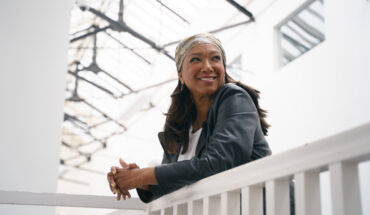To the uninitiated, the sound of the tabla can have a dilatory effect upon the senses, the drums arresting as few others can, and as one of the leading exponents of this beautiful instrument, Leeds-born Dalbir Singh Rattan now occupies a unique place in the British musical firmament.
“When I was four, my grandfather used to sing at the local temple and I used to go with him three times a week,” he says. “My family encouraged me to start learning an instrument, but ultimately they were against me taking a musical career path because they thought I wouldn’t be able to earn a living from it. I’d been hearing that from a young age, so I thought I’d see how it would go.”
But with the tabla, Dal has taken the higher path. The instrument, most commonly used in North Indian classical music, possesses a versatility that crosses musical styles and, since this country’s dalliance with all things Eastern in the 1960s, has assumed a special place in the British soundscape, its tonal beauty rare and much sought after.
“Later on, when I was doing my GCSEs, it turned out that my music teacher had never heard of the tabla, so I feel I am one of the first people to take the tabla as a grade in my practical exams. Then I went to the Leeds College of Music, part-time for three years, to study the theory side of the instrument, which involved studying the history, notation and compositional side of it in much more depth.
“There were other tabla players there and one of my friends, who is a fine player, provided friendly competition, but we were just enjoying it all and we didn’t realise back then about the weight of the instrument and how far it would carry us forward in life.”
The instrument’s classical gravitas and its place in mainstream pop make the exponents of the tabla compelling contributors to an ever-evolving musical world. Tabla is a set of two drums, research suggesting that they were invented in the first half of the 18th century for the new style of music called ‘khayal’, which today is the basis of modern Indian classical music.
“Back then when I was studying, the Asian music scene was practically non-existent,” Dal says. “When I started learning how to play the tabla, in its classical form, it was very hard to find teachers because this wasn’t happening in mainstream education. It was below the radar, and you had to find musicians or artists who were travelling, visiting or performing in the country. There were masterclasses and workshops and things like that, so I started becoming a part of that.
“There was never any plan for music with me. I’ve just been very fortunate. I’ve also been very fortunate to meet Aziz Ibrahim [who had worked with The Stone Roses, Simply Red and Ian Brown among many others]. We met in 1998. He opened another door for me because my background was in Indian classical music, and he took me into the indie rock‘n’roll scene, which was a very different world. Our first show was at a festival in Cape Town. I was a huge Ian Brown fan and loved ‘Unfinished Monkey Business’, so I had heard of Az. While we were out there, Az asked me if I fancied doing some shows with him. The following week our first gig together was supporting Marillion at the Scala in London. It all started from there. Aziz and I were working together, and people would ask us to open up for them. And this was long before social media kicked off, and at that point when we opened up for Ian [Brown], there were 5,000 kids in front of us and the set up was completely different to what I was used to.
“The Asian underground scene was quite prominent at that time, and I did dabble in that, but playing live or playing with Az, or when we opened for Ian Brown and Weller, was a completely different world. And I wanted to stay in that zone. And the tabla was increasingly appreciated by people who knew nothing about the instrument. In fact, I preferred playing to people who didn’t know about it.
“I was just learning and I’ve always been the first person to put my hand up and say ‘I don’t know that’. So I’ve always been very honest towards my form, and people like Az and Ian really embraced my work. I learned so much from them.”
Dal was classically trained by Sukhvinder Singh ‘Pinky’ and over the years has also worked with artists such as Ian Brown, Richard Ashcroft and Paul Weller. His work with Aziz Ibrahim ranks alongside that of John McLaughlin and Zakir Hussain in the demonstration of just what can be achieved if musicians choose to seek a newer form of expression through the devotion to, and mastery of their instruments.
“It’s all about balancing things. I enjoy teaching and playing live. I’ve just come back from Calcutta where I played at the Indian Museum, which is a beautiful venue. I wrote a piece of music and ten or eleven of us went out, Az included, to perform it, and it was good to bring my tabla to the forefront as I write more. You can be a tabla player but you can sing and play and also lead the group. And hopefully more opportunities will come of it. It was our first show abroad and now we’re hoping to do a UK tour.
“I’ve also been invited to Buckingham Palace for the 21 July to perform and talk about my music in the royal gallery for The Splendours of the Subcontinent exhibition. So I’m exploring different avenues right now.”
Dal is also involved with 100 Masters in Birmingham and recently met with Julian Lloyd-Webber to discuss the inclusion of Indian classical music in the curriculum of the Royal Birmingham Conservatoire. “Indian music has always been taught in the communities and people have never usually ventured outside them to learn music.”
When asked who he most admires, he answers without hesitation: “It’s my teacher, my guru, the world-renowned Sukhvinder Singh ‘Pinky’. I’ve been studying with him for 20 years now and I was fortunate to have been taken under his wing. He is my inspiration and guide and has influenced all of my playing.
“Music is just music,” he says. “I hate the word fusion. I don’t know what fusion music is, to be honest. But yes, there can be a danger of bringing forms of world music together without care and they end up cancelling each other out.” Such gimmickry is for the birds, as are unfairly awarded plaudits. “Ravi Shankar has often been called the foremost exponent of Indian classical music because of his association with The Beatles and, in particular, George Harrison, but I can name you ten sitar players at that time who were greater players than he was, but who never got the recognition or the spotlight. It’s that kind of world so, knowing that, I don’t want my tabla playing brought in as tokenism.
“So with Az, we’re bringing two very powerful instruments together with powerful playing. It’s not background music, it’s not fusion music, it’s a proper band sound that we create. We believe that what we do is unique. People have very often never seen or heard anything like what we play. The Asian blues, or whatever you want to call it, is more a statement. It makes us more determined, and I also think that audiences have grown really bored of some of the music that’s around now.”
He has a point. Music buyers, arguably, have become deaf to the tried and tested postwar drums, guitars and keyboards sound that has swamped the airwaves for too long and to a point that now a natural change in tone and form is necessary and, for the listening public, desirable. People now instinctively seek a freshening of music, holding out for a sound that will embolden. “When people hear the marriage of the tabla and the guitar, their ears are opened. There’s still so much to understand about music. I was with my teacher a few days ago and realised, again, about how much there is still to learn. And I want to develop my songwriting and music writing. I’d like to score music and with my friends and fellow musicians I’ll be able to explore all of this while still being able to teach and, hopefully, inspire.”
Jason Holmes
@JasonAHolmes





